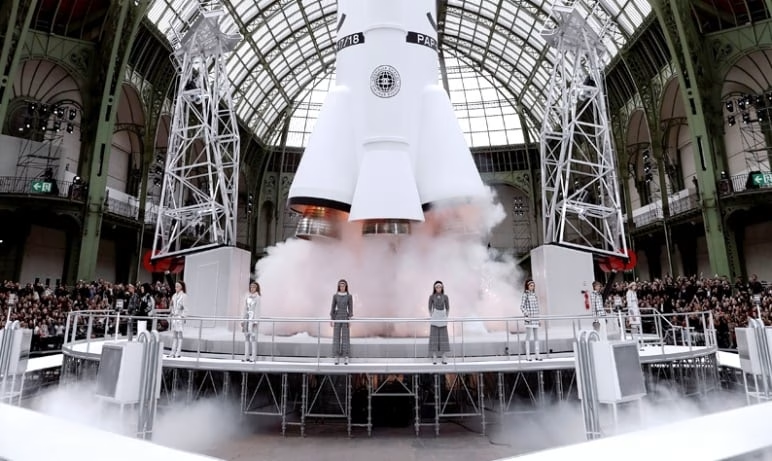Fashion just reached a new milestone, outer space! Yes, you read that right. Prada, the luxury fashion house known for its iconic designs, is now venturing beyond Earth. Prada collaborated with Axiom Space, designing space suits for NASA’s upcoming Artemis mission. This groundbreaking partnership promises not only to ensure astronaut safety but also adds a high fashion perspective to the lunar exploration.
Fashion Meets Functionality
NASA’s Artemis mission, scheduled to return humans to the Moon by 2025, aims to push the boundaries of space exploration. Enter Prada and Axiom Space: by blending Prada’s design finesse with Axiom’s engineering expertise, they’re creating suits that redefine what space gear can be. These suits won’t just withstand the harsh conditions of space. They will also incorporate ergonomic and aesthetic elements usually reserved for high fashion. The suits are designed to enhance mobility, comfort, and durability while embodying Prada’s aesthetic. A testament to the notion that style and function can co-exist, even in the extremes of space.
This mission will include the first woman to walk on the Moon since Apollo 17, which is a proud moment to be a part of. Prada’s expertise in materials and design will enhance the Axiom Extravehicular Mobility Unit (AxEMU) spacesuit. The focus is on comfort, durability, and flexibility. This expedition aims to support lunar exploration and expand scientific capabilities on the Moon.
Why this collaboration matters
Prada’s step into space suits isn’t merely a headline-grabbing experiment. It represents a growing trend of cross-industry innovation, that highlights the power of combining different fields. Science just doesn’t have a trendy identity yet. But there is a big trend for more and more space travel, as seen with Musk and Spacex.
Besides, this isn’t the first time a fashion brand has created designs for outer space. Adidas collaborated with the International Space Station (ISS) Lab to create space-tested footwear. This partnership allowed Adidas to test the performance of shoe components in microgravity, which provided insights for producing high-performance, lightweight sneakers on Earth. Virgin Galactic teamed up with Under Armour to create the first commercial astronaut space wear. Designed for passengers on Virgin Galactic’s suborbital flights, the suits combine technical features like temperature regulation with sleek, futuristic styling.
In taking on this challenge Prada has done more than add its name to a unique collaboration. Prada effectively broadened the boundaries of what luxury fashion can accomplish. It is a showcase of the role high-fashion design can play in functional, technical applications. This partnership also speaks to a broader future where fashion, technology, and engineering might regularly come together. They can collaborate to redefine bags, clothing, and other everyday objects.
Cross-industry collaboration
Prada’s partnership with Axiom represents a new benchmark for what’s possible. In particular with these industries traditionally known for creativity team up with those focused on engineering and tech. The success of this collaboration might pave the way for other luxury brands to partner with tech giants, producing products that bridge style and performance in entirely new ways. Imagine a world where high fashion drives innovation in not only how things look but how they function in challenging environments. This not only drives innovation, it strengthens the fashion industry economic position. It shows fashions resilience and adaptability, being even one step ahead compared to many industries.

What does this mean for you?
Fashion and space have intersected in fascinating ways. Luxury brands, designers, and space agencies are pushing boundaries. For those in fashion, design, and tech, this team up is an inspiration. This is a reminder that cross industry collaborations brings innovation. Partnerships like these emphasise the transformative potential that’s unlocked when we think beyond traditional roles and industries. It signals a growing demand for talent who are not only creative but also adaptable, ready to embrace fashion needs that didn’t exist just a few years ago.

